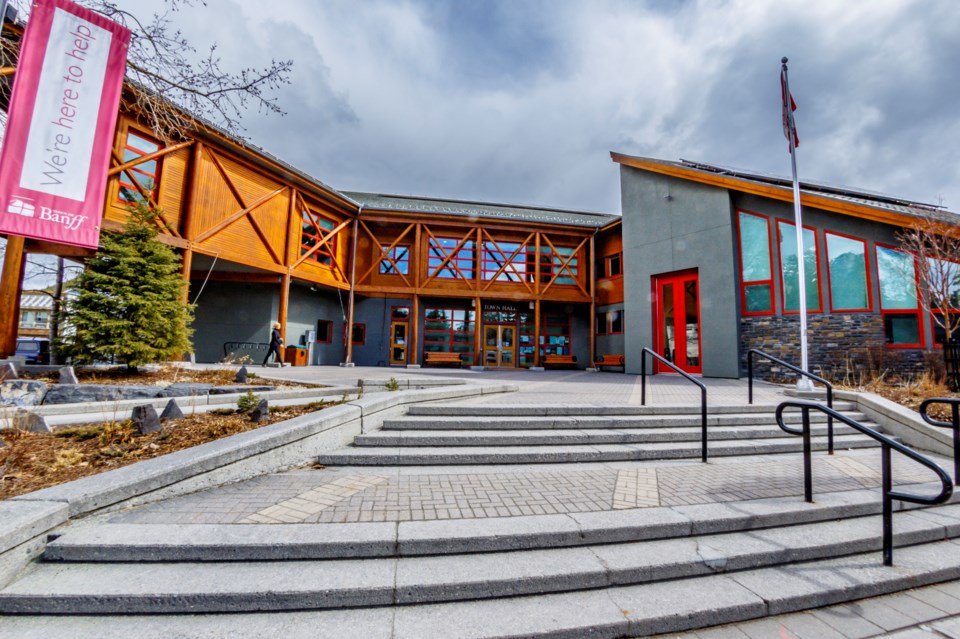BANFF – Banff councillors are interested in exploring photo radar in Banff to increase road safety.
Council’s governance and finance committee voted 4-2 to direct administration to bring back a report for 2024 service review on the status of photo radar in the province at that time given the current freeze on new photo radar throughout Alberta.
Coun. Barb Pelham, who raised the issue, said she is coming from a place of concern for safety on Mountain Avenue and Tunnel Mountain Road, where motorists drive at speeds of up to 60 km/h to 70 km/h in 30 km/h speed zones.
“I am suggesting that we look at photo radar within the townsite of Banff,” she said during a Dec. 12 service review meeting.
“I ride a bike, and when somebody flies by me at 60 and 70 km/h, it’s pretty terrifying, whether you’re going uphill or downhill.”
Currently, there is a provincial moratorium until Dec. 1, 2023, on new photo radar equipment, upgrading existing photo radar devices and adding new locations as the Alberta government wants to make sure that photo radar technology is used for traffic safety purposes and not to generate revenue.
In December 2021, the province tightened the rules on photo radar in response to requests for the elimination of ‘fishing holes’ or “speed traps” and public concerns that photo radar was being used by municipalities as a cash cow rather than enhancing safety.
The changes, which came into effect in April, included restrictions on photo radar use in transition zones and on residential roads with less than 50 km/h speed limits, although the restrictions do not apply to schools, playgrounds or construction zones.
The new rules also eliminated double ticketing within five minutes, mandated all photo radar enforcement vehicles be clearly marked and visible, and required rationale and data for sites to justify the use of photo radar.
Pelham said she is aware of the new rules, agreeing photo radar is not meant to be a source of revenue or used as “easy fly traps.”
“It is primarily focused on safety and that is the lens that I am looking at this,” she said.
Coun. Ted Christensen, who along with Coun. Grant Canning voted against Pelham’s motion, said the municipality could perhaps look at other traffic calming measures such as speed bumps – also a recommendation of the province.
“If photo radar is not an option at this time, I understand there are other ways to slow traffic down, and we use some of them in our community already,” he said.
Town Manager Kelly Gibson said the speed of vehicles in those areas identified by Pelham as a concern is currently enforced.
“We also have the speed signs assigned out there on a regular basis to educate,” he said.
Twenty-six municipalities in Alberta use photo radar, including neighbouring Canmore, which introduced it as one tool to reduce speeding and increase safety in 2007.
Between 2007-21, net revenue from photo radar in Canmore was $8.9 million for an average of about $598,000 a year. However, $2.4 million was collected from 2018-21 for an average of $610,000 a year.
The program has helped pay for one-and-a-half RCMP positions since 2011 and helped cover $196,000 in RCMP funding last year. It has also helped fund more than $2.3 million in traffic and community safety initiatives since 2012.
In 2021, transportation-related projects funded through photo radar revenues included bike racks, traffic calming for new projects, sidewalk upgrades at Mountaineers Village, installation of a safe crosswalk, traffic calming and new sidewalks at Stewart Creek, and a digital sign display on 7th Avenue.
According to the mandatory annual report, the photo radar vehicles in Canmore spent 40 per cent of their time in playground and school zones in 2021, while the remainder of time was spent in other speed zones.
The report notes that 70 per cent of all speeding violations in 2021 were non-residents, with locals making up the balance. In 2021, there were 8,916 photo radar violations. The highest number was in 2014 with 12,376 and the lowest was in 2012 at 5,371.




